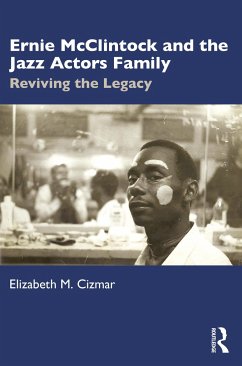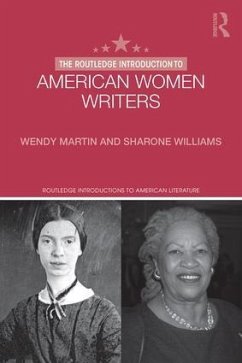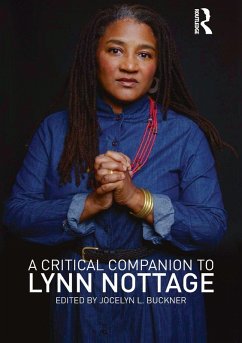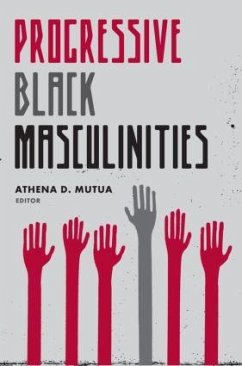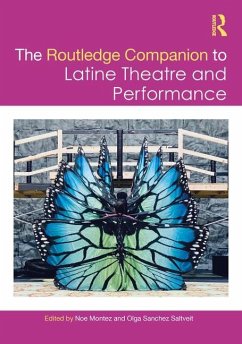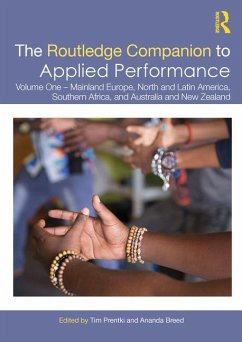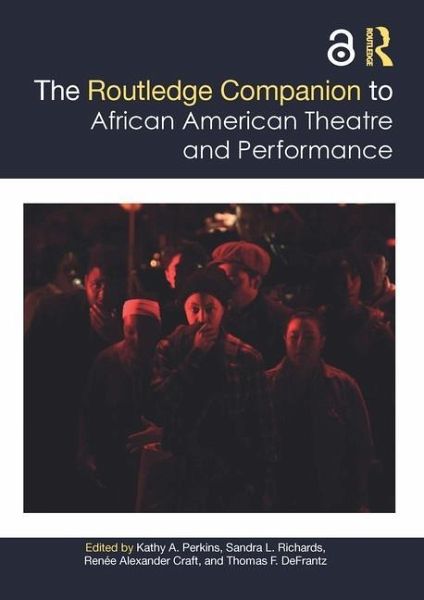
The Routledge Companion to African American Theatre and Performance

PAYBACK Punkte
27 °P sammeln!
The Routledge Companion to African American Theatre and Performance is an outstanding collection of specially written essays that charts the emergence, development, and diversity of African American Theatre and Performance-from the nineteenth-century African Grove Theatre to Afrofuturism. Alongside chapters from scholars are contributions from theatre makers, including producers, theatre managers, choreographers, directors, designers, and critics. This ambitious Companion includes:A "Timeline of African American theatre and performance."Part I "Seeing ourselves onstage" explores the important ...
The Routledge Companion to African American Theatre and Performance is an outstanding collection of specially written essays that charts the emergence, development, and diversity of African American Theatre and Performance-from the nineteenth-century African Grove Theatre to Afrofuturism. Alongside chapters from scholars are contributions from theatre makers, including producers, theatre managers, choreographers, directors, designers, and critics. This ambitious Companion includes:
A "Timeline of African American theatre and performance."
Part I "Seeing ourselves onstage" explores the important experience of Black theatrical self-representation. Analyses of diverse topics including historical dramas, Broadway musicals, and experimental theatre allow readers to discover expansive articulations of Blackness.
Part II "Institution building" highlights institutions that have nurtured Black people both on stage and behind the scenes. Topics include Historically Black Colleges and Universities (HBCUs), festivals, and black actor training.
Part III "Theatre and social change" surveys key moments when Black people harnessed the power of theatre to affirm community realities and posit new representations for themselves and the nation as a whole. Topics include Du Bois and African Muslims, women of the Black Arts Movement, Afro-Latinx theatre, youth theatre, and operatic sustenance for an Afro future.
Part IV "Expanding the traditional stage" examines Black performance traditions that privilege Black worldviews, sense-making, rituals, and innovation in everyday life. This section explores performances that prefer the space of the kitchen, classroom, club, or field.
This book engages a wide audience of scholars, students, and theatre practitioners with its unprecedented breadth. More than anything, these invaluable insights not only offer a window onto the processes of producing work, but also the labour and economic issues that have shaped and enabled African American theatre.
A "Timeline of African American theatre and performance."
Part I "Seeing ourselves onstage" explores the important experience of Black theatrical self-representation. Analyses of diverse topics including historical dramas, Broadway musicals, and experimental theatre allow readers to discover expansive articulations of Blackness.
Part II "Institution building" highlights institutions that have nurtured Black people both on stage and behind the scenes. Topics include Historically Black Colleges and Universities (HBCUs), festivals, and black actor training.
Part III "Theatre and social change" surveys key moments when Black people harnessed the power of theatre to affirm community realities and posit new representations for themselves and the nation as a whole. Topics include Du Bois and African Muslims, women of the Black Arts Movement, Afro-Latinx theatre, youth theatre, and operatic sustenance for an Afro future.
Part IV "Expanding the traditional stage" examines Black performance traditions that privilege Black worldviews, sense-making, rituals, and innovation in everyday life. This section explores performances that prefer the space of the kitchen, classroom, club, or field.
This book engages a wide audience of scholars, students, and theatre practitioners with its unprecedented breadth. More than anything, these invaluable insights not only offer a window onto the processes of producing work, but also the labour and economic issues that have shaped and enabled African American theatre.





